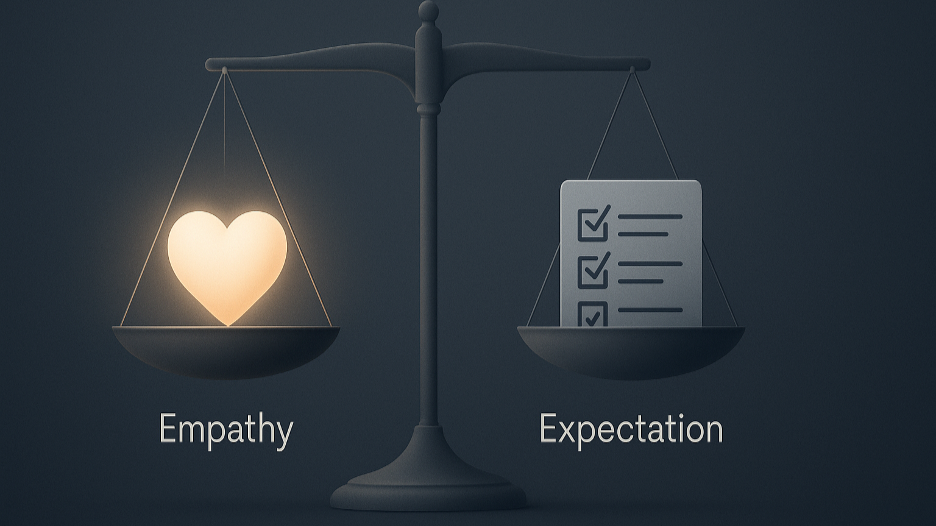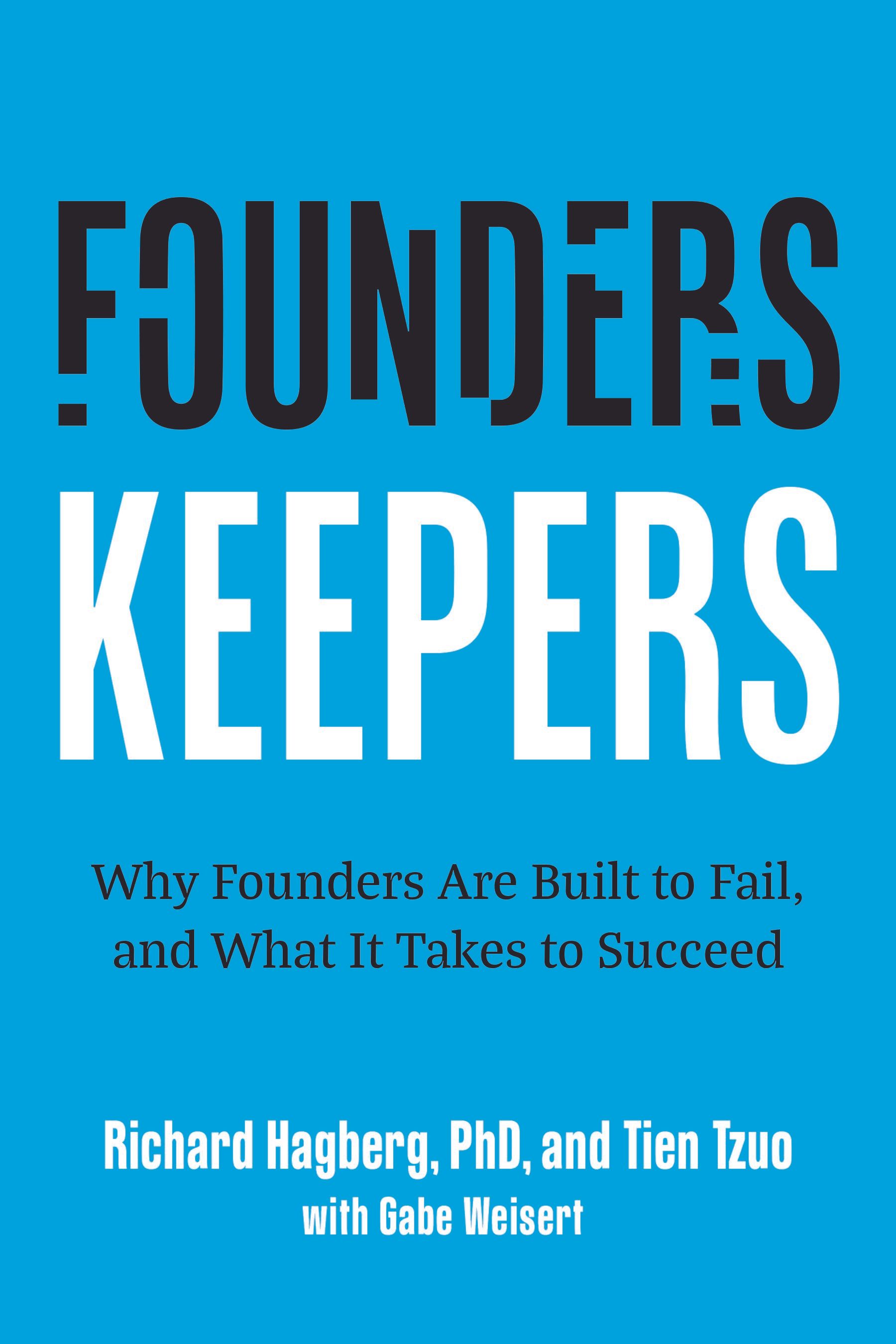Article
The Leader’s Evolving Role in Working Through Others
August 13, 2020
There are no leaders without followers. It's about leverage

The Leader’s Evolving Role in Working Through Others
In the beginning, during the organization’s early stage of growth, the leader may play many roles. It’s quite natural to wear many hats and attempt to take on a wide range of responsibilities, and for a while that may work. It may be both expedient and cost effective in the short run, but not in the long run!
You can’t do everything. As the organization grows, you will come to the realization that you can’t be an expert in all the areas essential to the growth and effectiveness of the company. You can’t take charge of engineering, sales, finance, product, marketing, and so on. It’s neither effective, nor, as the organization grows, possible. Entrepreneurs must get beyond the belief that they can and should have their hand into every part of the company. You need to bring in people who have expertise in different domains and let them lead those teams and functions.
Grow from working in the company to working on the company. In sports terms, players sometimes go from being a player, to a player-coach, and finally to being the coach. You may start out writing code, continue to lead product development, but also facilitate teamwork, build a company culture, begin to give people direction and devise and implement a strategic plan, negotiate additional funding with venture capitalists for the destiny of the organization: you are working ON the company rather than IN the company.
This is a huge transition for most people, and it is not easy. Many young tech entrepreneurs, accustomed to working creatively on their own, have never had the experience of working on a successful team or working with an effective leader. Many derive their sense of self-worth from being a “doer” and accomplishing something tangible every day. This could make it difficult to let go of details and tasks that make you feel you have done something concrete and useful. This feeling can make you reluctant to let go and “just lead”. So, to shift from being the one who is focused on task accomplishment, who solves tangible problems and makes all the decisions to seeing yourself as the one who facilitates change and works primarily or even completely through others is a major step. As leader you must accept that you are no longer just a doer but instead, someone whose role is motivating, focusing and involving, getting input and buy-in and working indirectly to get things done.
“Roberto needs to move from a position of chief doer to a position where he guides and facilitates teams and groups to proactively drive the business using team member’s own expertise and giving them a high degree of autonomy.”
In short, as the organization evolves, the leader’s role also needs to evolve. The leader continues to play an important role but his or her individual contribution is increasingly replaced by team building skills and facilitating the collective contributions of the team.
I remember well a coaching session with a very young, inexperienced CEO who started a company that had only 11 people when I began our engagement, but who saw his company growing dramatically. He opened our conversation by saying, “I’m depressed because I don’t know what I should be doing. I don’t feel I’m adding value anymore. I used to write code and get involved in managing projects but now my team has grown and I’m spending my time doing things that I don’t see as having tangible value.” I pointed out to him that his role was now to be the leader, the direction setter, the motivator, the communicator, the facilitator of teamwork and the builder of culture. I said, “It’s not the same mountain, but a different mountain to climb, and a whole new challenge in learning to play a new role.”
His self-esteem had come from being a doer, and he had no concept of what it meant to be a leader and a CEO. It was a whole new ballgame now. But he learned well: The company, that he started with college roommates, now has 400 employees and is highly successful. They’ve had seven rounds of funding that brought in over 200 million dollars. (it’s now seven years later.)
Evolution of Your Role as Leader. In their book, Leading at the Speed of Growth, Katherine Catlin and Jana Matthews delineate four main stages in the growth of an organization:
- Startup
- Initial Growth
- Rapid Growth
- Continuous Growth
At each stage, the role of the leader shifts. In the Startup phase, you are an active Doer and primary Decision Maker. But as the fledgling organization starts to take off in its Initial Growth phase, hires more people and expands, you need to cut back on some of your “doing” activities in order to become the chief Delegator as well as the Direction Setter. In the third stage, as the company scales due to Rapid Growth, your role must shift to being a Team Builder, Coach, Planner, and Communicator (both internally and to the public). Finally, in the phase of Continuous Growth, the leader becomes Change Catalyst, Strategic Innovator, Chief of Culture, and overall Organization Builder.
These roles are qualitatively quite different. To maintain effective leadership as the organization progresses from one stage to the next, you’ll need to change with it, being willing to leave behind attitudes and behaviors that worked quite well at one stage but are no longer optimum as the organization scales.
Become a facilitator of collaboration and success. Use your team for collaborative, synergistic problem-solving. Stop trying to control every decision. The leader sets the tone on an executive team. As the leader, you must help the team work together effectively, resolve conflicts, support one another, solve problems, and make decisions efficiently as a group. For this, team members need to trust each other and communicate openly. As the leader it’s your role to make this happen.
If the leader has surrounded him/herself with team members who have complementary skills, strengths, experience, and perspectives, great things can begin to happen. A key role of the leader is to guide, support, and facilitate effective team processes and interactions to get the most out of the synergy from the team. The leader needs to be sure the team is focused and aligned.
Get everyone aligned around a common sense of purpose. It is also vital to foster a common sense of purpose and identity around the mission and create a safe, supportive, open environment where differences are resolved, and problems and decisions are worked through effectively. It’s the leader’s role to get everyone working together and not let competition, ego battles and silo mentality destroy teamwork and hamper the organization’s ability to grow and thrive.
Challenge people to be and do their best. Along with fostering a supportive work environment, the leader needs to challenge individuals and teams to raise the bar, not to settle for mediocre or “okay” but to be the best they can be. He or she has to walk the line between being supportive and encouraging on one hand, and challenging people to be accountable for outcomes. Not everybody is going to produce top-quality results. Some people are lazy and want to just "get by," but as the leader that has to be unacceptable to you. Ultimately, you will be held accountable for what the team accomplishes or does not accomplish. So sometimes you may need to put on a taskmaster’s hat, express the expectation that your people will put forth their best effort, and be as demanding of results as the situation requires. The best leaders I have worked with over the years have been a blend or combination of demanding and supportive.
Respond to the need of the time. The best leaders are also attuned to the ever-changing business climate, as well as the social, macro-economic, and political trends, any or all of which could influence the direction and success of the business. Different times and conditions call for different styles of leadership.
For example, in recent years, Andreessen Horowitz co-founder and CEO Ben Horowitz drew a useful contrast between what he called a Wartime CEO and a Peacetime CEO. In Peacetime (by which he means when the company has a strong competitive edge and its market is growing) leadership can afford to deploy the company’s strengths to expand in creative directions. When Google found itself with a near-monopoly in the search market, they asked employees to spend 20% of their time on creative ideas to grow the company in new directions. Peacetime leadership can comfortably allocate time to nurturing team cohesion and individual creative expression. These are times when “delegation,” “don’t micromanage,” and so on can be emphasized by the leader.
In Wartime, however, when the company is under pressure to become profitable, or it is facing severe competitive threat and its very survival may be at stake, the entire focus has to be on alignment behind the organization’s mission. Horowitz cites the example of Steve Jobs’ return to a struggling Apple, which was literally a few weeks away from bankruptcy. Jobs “needed everyone to move with precision and follow his exact plan; there was no room for individual creativity outside of the core mission.” Wartime conditions can come even to well-established, strong companies, but for startups and their leaders, it’s Wartime 24/7.
However, Horowitz’s advice for the Wartime phase can be quite extreme. Clearly, leaders need to act decisively, and especially with start-ups, they often need to decide quickly and sometimes unilaterally, especially if there has not been enough opportunity to gather a team of seasoned professionals, as I will discuss in the next chapter. But Horowitz implies that you need to stay in Wartime mode until you do have a strong competitive edge. That gives permission, and even encourages leaders to behave in a controlling and autocratic way, exercising top-down leadership rather than seeking buy-in and consensus.
This is problematic in the long run. As you begin to bring in more senior people, who expect and deserve to have a level of autonomy and a voice in decision making, if you stay in Wartime mode too long and are too controlling, you will fail to leverage the synergy of your team. You won’t be able to benefit from hearing voices and opinions that prevent you from falling into sunflower bias or confirmation bias. After all, the benefit of involving a group in decision making is to gather diverse and creative perspectives on how to deal with problems and questions.
In situations that require fast, decisive action, it may occasionally be necessary for a leader to either make a decision without input or to seek input but not have the time to reach consensus when it comes to choosing a course of action. This would be a case of, “Thank you very much for your input, I’ll let you know what I decide.Be careful not to operate in Wartime mode as a default, but only when it is truly necessary. Be adaptable. Adjust the amount of participation you allow and input you ask for, based upon the maturity and expertise of the team around you.
share this
Related Articles
Related Articles

The Nicest Boss in the World He was adored. He remembered birthdays, checked in on people’s families, and stayed late helping fix slides no one asked him to touch. His team called him “the best boss we’ve ever had.” He was also running on fumes. Behind the warm smile was a leader quietly burning out — drowning in everyone else’s problems, too empathetic for his own good. If you’re a leader who prides yourself on caring deeply, this might sting a little: empathy, taken too far, becomes control in disguise. Empathy’s Secret Shadow Empathy is essential for leadership. It builds loyalty, safety, and trust. But the same trait that makes people feel seen can also make them dependent. When you can’t tolerate someone else’s discomfort, you start protecting them from it. You step in to fix, to soothe, to rescue. It looks noble. It feels generous. But it quietly steals agency — theirs and yours. Your team stops growing because you’re doing their emotional labor. You stop leading because you’re managing feelings instead of outcomes. That’s the hidden cost of care. The Emotional Guilt Loop Over-empathetic leaders live in a constant tug-of-war between compassion and guilt. They think: “They’re already stretched — I can’t pile more on.” “If I push harder, I’ll seem uncaring.” “I’ll just do it myself; it’s easier.” Sound familiar? That’s not empathy anymore. That’s guilt masquerading as kindness. And guilt makes terrible business decisions. Because guilt doesn’t guide you toward what’s right. It just steers you away from what feels uncomfortable. A Founder’s Story One founder I coached, let’s call her Lina, led with heart. She built her company around “people first.” And she meant it. But somewhere along the way, “people first” turned into “me last.” She couldn’t say no. She kept saving underperformers, approving vacations during crunch time, rewriting others’ work to spare them stress. Her team adored her — until they didn’t. Because beneath her helpfulness was quiet resentment. And resentment always leaks. The breakthrough came when she realized something simple but hard: “I was protecting people from learning the hard parts of growth.” That’s when she started leading again instead of parenting. When Caring Becomes Control Here’s the paradox: the more you care, the more you risk over-controlling. You jump in to fix not because you don’t trust them, but because you feel for them. It’s empathy turned inward — I can’t stand watching them struggle. But leadership isn’t about eliminating discomfort. It’s about using it wisely. People grow by stretching, not by being spared. When you save someone from every failure, you’re also saving them from competence. The Biology of Burnout Chronic empathy triggers chronic stress. When you absorb other people’s emotions all day, your nervous system never gets a break. You start mirroring everyone’s anxiety like an emotional amplifier. Your brain thinks you’re in crisis — even when you’re not. That’s why over-caring leaders are often the first to burn out. Their compassion becomes constant cortisol. The irony? The leaders who want to create safety for others end up unsafe themselves. How to Care Without Carrying Feel, then filter. It’s okay to feel someone’s frustration. Just don’t keep it. Ask: “Is this mine to hold?” Help through accountability. Say, “I know this is tough, and I also need you to take ownership.” The and matters. Let discomfort be developmental. When a team member struggles, resist rescuing. Stay present, not protective. Coach before you comfort. Instead of “Don’t worry,” try, “What do you think your next move is?” Reframe empathy as empowerment. Caring isn’t about absorbing pain; it’s about believing people can handle it. Funny but True One exec I worked with told me, “Every time I stop helping, I feel like a jerk.” I said, “No — you feel like a leader. It just takes a while to tell the difference.” He laughed and said, “So… you’re telling me leadership feels bad at first?” I said, “Exactly. Growth always does.” The Cultural Ripple Effect When leaders overfunction, teams underfunction. When leaders hold space instead of taking space, teams rise. Empathy should expand others, not consume you. The healthiest cultures balance care and candor — support and stretch. They normalize struggle as part of the process instead of something to be hidden or rescued. That’s what real compassion looks like in motion. The Maturity of Tough Empathy Empathy without boundaries is exhaustion. Empathy with boundaries is wisdom. The mature version of empathy doesn’t say, “I’ll protect you.” It says, “I believe you can handle this — and I’ll walk beside you while you do.” That’s not cold. That’s developmental. Your Challenge This Week Notice where you’re rescuing someone instead of coaching them. Pause before you step in. Ask yourself, Am I helping because they need it — or because I need to feel helpful? Then take one small risk: let them handle it. They’ll probably surprise you. And you’ll feel lighter than you have in months. Final Word Caring is beautiful. It’s what makes you human. But unchecked empathy turns leaders into emotional pack mules — carrying what was never theirs to bear. Real leadership is still full of heart. It just remembers that compassion without accountability isn’t love. It’s fear. And the moment you stop rescuing everyone, you finally start freeing them — and yourself.

The Smart Leader’s Blind Spot It’s strange how often the smartest people make the worst decisions under pressure. They don’t lose IQ. They lose perspective. I’ve seen this happen more times than I can count. A sharp, decisive executive starts second-guessing every move. They overanalyze, overwork, and overcontrol — all in the name of being “thorough.” They think they’re being rational. But underneath the spreadsheets and meetings is something far less logical. It’s fear. The Fear That Doesn’t Look Like Fear We think of fear as panic — sweating, shaking, obvious. But most leadership fear hides behind competence. It shows up as perfectionism, busyness, overcommitment, indecision. It sounds like, “Let’s get more data.” “Let’s not rush this.” “Let’s keep this one close.” That’s not analysis. That’s avoidance with a better vocabulary. When fear runs the show, the goal subtly shifts from making the right decision to avoiding the wrong one. And those two things are worlds apart. The Cost of Fear-Based Leadership When leaders operate from fear, everything tightens. They stop listening. They rush to defend. They play small when the company needs boldness. They keep people who are loyal over people who are competent — because loyalty feels safer. And here’s the real tragedy: the team starts copying the fear. They become cautious, compliant, quiet. Pretty soon, no one’s leading anymore. They’re all managing risk — mostly emotional risk. A CEO’s Moment of Truth One CEO I coached — brilliant, confident, deeply human — was terrified of being wrong in front of his board. He masked it well. On the outside: decisive. Inside: a constant hum of anxiety. After a tough quarter, he admitted, “I realized half my decisions weren’t based on strategy — they were based on protecting my image.” That moment of honesty was the start of his maturity curve. Once he could name the fear, it stopped running his show. He didn’t become fearless. He became aware. And awareness is what turns reaction into wisdom. Why Fear Feels Safer Than Clarity Fear has a strange way of convincing us it’s caution. Caution whispers, “Slow down and look.” Fear screams, “Don’t move.” The first sharpens judgment. The second paralyzes it. And the more we listen to fear, the more it disguises itself as prudence. That’s why emotional maturity isn’t about suppressing fear. It’s about being able to say, “Ah, that’s fear talking — not fact.” How Fear Distorts the Mind Here’s what happens when fear hijacks leadership: Tunnel vision: You fixate on the immediate threat and forget the big picture. Confirmation bias: You start looking for data that validates your anxiety. Short-termism: You make safe decisions that feel good now and cause pain later. Blame shifting: You protect your ego by pushing ownership outward. The mind gets smaller. The leader gets reactive. The company gets stuck. The Maturity Shift Emotional maturity isn’t about being unshakable. It’s about staying curious in the presence of fear. Mature leaders don’t pretend they’re fearless. They just don’t let fear make the decisions. They pause, breathe, and ask, “What part of this is data, and what part is my insecurity talking?” That single question can change everything. A Founder’s Story A founder I worked with once said, “I’m not afraid — I just have high standards.” But as we unpacked it, he realized those “high standards” were actually a way to control outcomes. He feared disappointment — his own and others’. When he finally stopped trying to protect his reputation and started protecting his clarity, his decisions got faster and cleaner. The business didn’t just grow — it started breathing again. Because when you stop trying to look right, you finally have room to be right. Funny, But True I once asked a CEO what he’d do differently if he weren’t afraid of failing. He said, “Probably the same things I’m doing now — just with less Advil.” That’s the thing: most leaders already know what to do. Fear just makes it hurt more. How to Lead Without Fear (Even When It’s There) Name it early. The sooner you recognize fear, the less power it has. Ask yourself, “What’s the story fear’s telling me right now?” Reframe mistakes as tuition. You’ll still pay for errors — might as well learn something from them. Separate identity from outcome. A bad decision doesn’t mean a bad leader. It means a leader who’s still learning — like everyone else. Keep one truth-teller nearby. Someone who loves you enough to tell you when you’re acting from ego. Practice micro-bravery. Tell one hard truth a day. Say “I don’t know” once a week. Let discomfort become strength training. The Paradox of Fear Fear doesn’t make you weak. It means you care. But if you never face it, it becomes your compass — and it always points backward. Courage, maturity, clarity — they’re not opposites of fear. They’re what happen when you stop running from it. Your Challenge This Week Next time you feel that knot in your stomach — before a board meeting, a tough conversation, a high-stakes call — pause. Ask yourself: What am I afraid might happen? Then ask: What might happen if I act from clarity instead of fear? That’s not therapy. That’s leadership hygiene. Final Word The mark of maturity isn’t fearlessness. It’s self-awareness. You can’t control your fear. But you can choose whether it sits in the driver’s seat or the passenger’s. Great leaders don’t wait for fear to disappear. They lead with it beside them — quietly, respectfully — but never in charge.

The Overworked Hero Syndrome You can spot this one a mile away. They’re running at 120%, inbox exploding, calendar packed like a game of Tetris. They tell themselves it’s noble — “The team’s counting on me.” But deep down, it’s addiction. I know this pattern because I’ve lived it. That little rush you get when someone says, “We couldn’t do this without you”? That’s the dopamine hit of leadership ego. Feels good. Until it doesn’t. Because being indispensable isn’t a compliment. It’s a warning. Why Smart People Struggle to Let Go Most leaders don’t hoard work because they’re bad at delegation. They hoard because delegation threatens their identity. If your sense of worth comes from being the fixer, the doer, the one who “always delivers,” letting go feels like erasure. Who are you if you’re not in every meeting? Who are you if things go fine without you? That’s the emotional root of overwork — not competence, but fear of irrelevance. Control in Disguise Delegation looks like an operational skill, but it’s really emotional work. Leaders tell me all the time: “I can’t delegate — my team’s not ready.” What they mean is: “I can’t delegate — I’m not ready.” The truth is, your people won’t become ready until you give them the chance. That’s the brutal math of leadership: you can have control, or you can have scale. You don’t get both. A Founder’s Story A founder I coached — let’s call her Sara — ran her company like a benevolent tornado. She did everything: strategy, hiring, investor calls, even reviewing design files “just to make sure the tone was right.” When she came to me, she was working 80-hour weeks and quietly resenting everyone she was “helping.” I asked, “What would happen if you stopped fixing things for people?” She said, “They’d drop the ball.” Six months later, she tested it. She handed off a project completely — no shadow-managing, no emergency check-ins. Her team nailed it. She said, “I didn’t realize they were this capable.” I said, “They didn’t realize you were this controlling.” We both laughed — but she got the point. The Real Meaning of Delegation Delegation isn’t a time-management trick. It’s a transfer of trust. It says, “I believe you can handle this — even if you don’t do it exactly my way.” It’s also a developmental gift. When you delegate fully, you don’t just lighten your load — you level someone up. Delegation is how leaders stop being the engine and start being the architect. The Fear Behind “It’s Easier If I Just Do It” That sentence might as well be carved on the tombstone of burned-out executives everywhere. Sure, doing it yourself feels faster. But every time you do, you quietly train the organization to need you. You build a culture of dependence — and then complain that people don’t take initiative. Delegation feels risky because it is. You will lose control of how something gets done. But you gain something far more valuable: time to lead, not just manage. Funny but True I once told a CEO, “If you died tomorrow, who could run your company?” He said, “That’s morbid.” I said, “No — that’s planning.” He got the message. A few months later, he’d built a real leadership team for the first time. He told me, “It’s weird — I’m working less, and everything’s better.” That’s not weird. That’s delegation done right. How to Build the Trust Muscle Start small, but mean it. Hand off one real decision — not a token task. Resist the urge to check back in “just to see how it’s going.” Define success, not the path. Set the destination clearly, then step back. They’ll probably surprise you with how differently — and often better — they get there. Coach after, not during. Let people own outcomes before you give feedback. Growth requires a little space to fail safely. Reward initiative, not imitation. If you only praise people for doing things your way, you’ll never build leaders — only clones. Say thank you — and mean it. Appreciation is the emotional contract that makes delegation sustainable. The Emotional Reframe Delegation isn’t about trust in others. It’s about trust in yourself — in the system you’ve built, in your ability to recover from other people’s mistakes, and in your willingness to be unnecessary. That last one’s the hardest. But when you finally stop trying to be irreplaceable, your company starts becoming unstoppable. Your Challenge This Week Write down everything on your plate. Circle three things that drain you but could teach someone else something valuable. Pick one and delegate it — completely. Then, when the urge to “check in” hits, take a walk instead. Let them own it. When it works — and it will — tell them. Celebrate it. Because that’s how trust compounds. Final Word Letting go doesn’t make you weaker. It proves you’re strong enough to lead without needing to control. Every founder eventually faces the same test: can you stop being the engine and start being the ecosystem? The day you say yes, you stop leading through force and start leading through faith. That’s not surrender. That’s courage.


